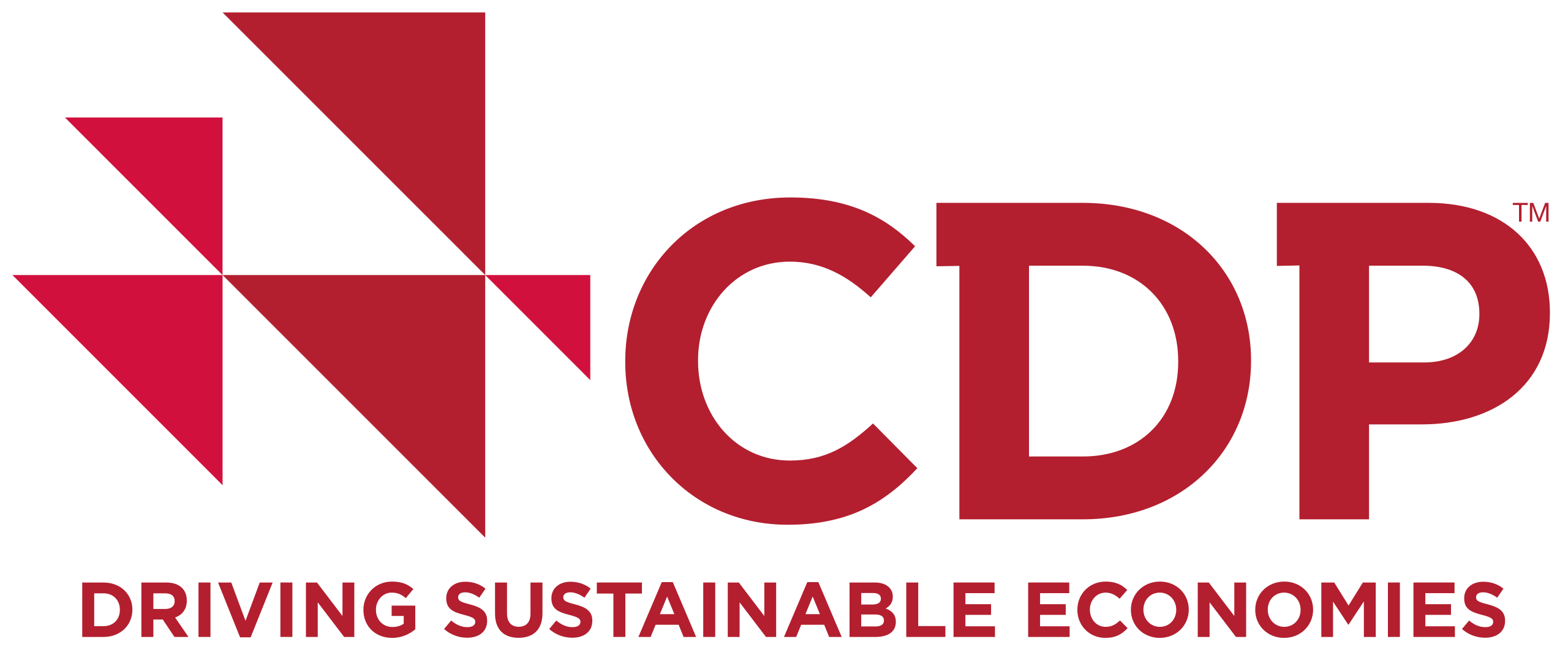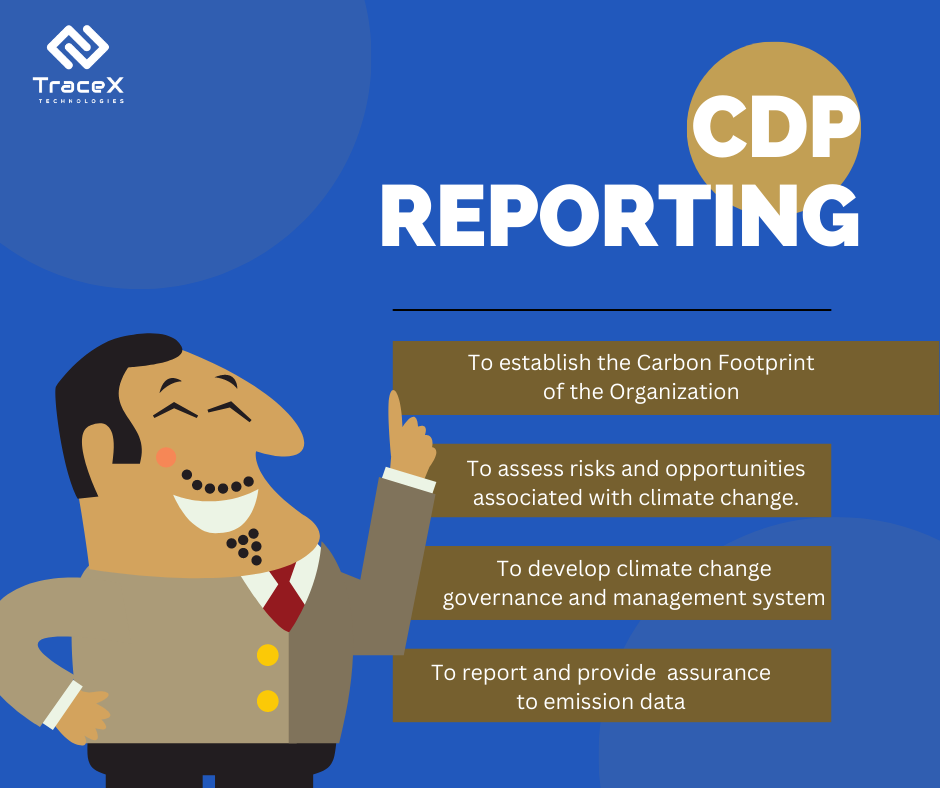Contact: +91 99725 24322 |
Menu
Menu
Quick summary: Unravel the complexities of CDP reporting with our simplified guide. Understand the key steps, benefits, and strategies to ace your sustainability disclosures. Simplify CDP reporting today!

In an era where environmental sustainability has transcended the realm of buzzwords to become a cornerstone of responsible business practices, the need for transparency, accountability, and action has never been more pronounced. Enter the Carbon Disclosure Project (CDP), a formidable global non-profit organization that stands as a guiding light for companies navigating the intricate landscape of environmental reporting.
As nearly 20,000 organizations disclose through CDP in 2022, a 38% increase since 2021 making it a record-breaking year for environmental disclosure.
In this comprehensive exploration, we will delve into the multifaceted world of CDP, dissecting its evolution, core objectives, reporting framework, benefits, and a detailed step-by-step process of participating in CDP reporting. By the time you reach the conclusion of this read, you will possess not only a deep understanding of how CDP operates but also insights into how it can be a pivotal ally in your organization’s sustainability journey.
The Carbon Disclosure Project, known colloquially as CDP, has emerged as a beacon of hope and clarity in an era clouded by environmental concerns. Established as a global non-profit organization, CDP operates as a platform that bridges the gap between companies and their environmental impacts. At its core, CDP facilitates the process of measuring, disclosing, and managing these impacts, fostering a culture of transparency and informed decision-making.
In a world grappling with the adverse effects of climate change, environmental reporting has transformed from a mere corporate obligation to a strategic imperative. This practice involves the systematic tracking and disclosure of a company’s environmental data, ranging from carbon emissions and water consumption to waste generation and more.
Producing a regular environmental report helps you to:
Environmental reporting not only showcases a company’s commitment to sustainability but also unveils opportunities for improvement, risk mitigation, and innovation.
The origins of CDP can be traced back to the year 2000, when a collective awareness of the need for greater corporate transparency regarding environmental impacts began to take root. A group of forward-thinking individuals envisioned a platform where companies could voluntarily disclose their environmental data. This data, in turn, would serve as a foundation for informed decisions by stakeholders, including investors, customers, and regulatory bodies.
The journey that began with a modest aspiration has blossomed into a global movement. From its inception as a project primarily focused on carbon emissions, CDP’s purview has expanded exponentially. It now addresses a comprehensive range of environmental issues, reflecting the intricate web of interconnected challenges that businesses and society face. Today, CDP’s reach extends far and wide, encompassing thousands of companies across diverse industries and geographies.
At its heart, CDP champions the virtues of transparency and disclosure. By actively participating in CDP reporting, companies take a pivotal step towards revealing their environmental impacts. This disclosure, in turn, empowers stakeholders with accurate, reliable data that informs their decisions and fosters a sense of shared responsibility.
Yet, CDP is not content with mere disclosure. It seeks to ignite the spark of action. When companies engage with CDP, they are not just embracing transparency; they are committing to tangible measures that reduce their environmental footprints. This proactive stance transforms CDP from a reporting platform into a catalyst for positive change.
Central to CDP’s reporting process are its standardized questionnaires. These questionnaires are meticulously tailored to different sectors and industries, ensuring that the reporting process is contextually relevant and comprehensive. Covering a broad spectrum of topics, from greenhouse gas emissions to water management, these questionnaires guide companies through the process of collecting and disclosing essential environmental data.
CDP’s reporting framework transcends the confines of a single environmental dimension. Rather, it embraces a holistic approach that addresses multiple environmental aspects. From climate change and water security to forest management, the framework acknowledges the interconnected nature of environmental challenges and offers companies a comprehensive toolkit for addressing them.

One of the most tangible benefits of engaging with CDP is the enhancement of a company’s reputation. By voluntarily participating in environmental reporting, companies signal their commitment to transparency and sustainability. This commitment resonates with stakeholders, including investors, customers, employees, and regulatory bodies, fostering a culture of trust.
The journey to sustainability is often paved with benchmarking and comparison. By participating in CDP, companies gain access to a treasure trove of comparative data. This data empowers businesses to assess their performance vis-à-vis industry peers, identify areas for improvement, and develop strategies for advancement.
In an increasingly interconnected world, global sustainability standards form the bedrock of responsible business practices. Participating in CDP aligns companies with these standards, positioning them as active contributors to initiatives such as the Task Force on Climate-related Financial Disclosures (TCFD) and the United Nations Sustainable Development Goals (SDGs).
The journey to CDP reporting commences with the simple yet pivotal act of registering on the CDP platform. This gateway provides companies with access to a plethora of resources, ranging from educational materials to reporting templates, offering a robust foundation for the reporting journey.
One size does not fit all in the realm of environmental reporting. CDP recognizes this diversity and tailors its questionnaires to various sectors and industries. Companies must identify and select the questionnaire(s) that align with their operations and industry nuances.
With questionnaires in hand, companies embark on the crucial process of data collection. This process involves the collaboration of various departments, locations, and supply chain partners. Once the data is amassed, it is meticulously entered into the CDP platform and submitted for evaluation.
A recurring challenge in environmental reporting is the collection and verification of accurate data. To address this, companies must establish robust data collection protocols, engage relevant stakeholders, and consider seeking third-party verification to bolster credibility.
Scope 3 emissions often encompassing indirect emissions along a company’s value chain, can pose complexities in measurement and reduction. To surmount this challenge, companies must collaborate closely with suppliers and partners, fostering a spirit of collective responsibility.
Sustainability is not an isolated endeavor; it must be seamlessly integrated into a company’s overarching business strategy. To overcome this challenge, companies must view CDP reporting as an opportunity for innovation, risk mitigation, and value creation. This integration can catalyze transformative change.
Trace Carbon acts a s a tool kit that aligns seamlessly with CDP reporting. It not only ensures accurate and efficient reporting but also empowers organizations to make data-driven decisions, improve environmental performance and contribute to global sustainability goals.
Data Aggregation- The platform can aggregate data from various sources including energy consumption, emission data, supply chain information which simplifies the process of gathering accurate data for CDP reporting
Automated Data Collection- Integration with automated tools within the platform reduces the need for manual entry thereby minimizing errors and saving time in data collection.
Real-time tracking and Monitoring- Real-time tracking of environmental metrics ensures organizations have upto date information for CDP reporting.
Emission calculations and Reporting- The platform can calculate emissions across scopes using standardized methodologies to generate accurate reports that align with CDP’s reporting requirements.
Data Validation and Quality Control- The platform validates data accuracy and compliance with CDP’s reporting guidelines.
Supply Chain Engagement- The platform also enables organizations to gather information from suppliers and partners thereby streamlining the process of including Scope 3 emissions in CDP reporting.
Report Generation- The platform generates reports based on the data collected, validated and analyzed which simplifies the reporting process and ensures adherence to standards.
Continuous improvement- The ongoing monitoring and reporting facilitates continuous improvement efforts and identifies areas for innovation to reduce emissions and improve sustainability metrics.
The Carbon Disclosure Project (CDP) emerges not merely as an entity but as a dynamic force for change. It simplifies the intricate landscape of environmental reporting, offering companies a structured pathway toward transparency, accountability, and meaningful action. Engaging with CDP transcends the realm of compliance; it embodies a commitment to a sustainable future. As businesses navigate the multifaceted challenges posed by environmental concerns, CDP stands as a steadfast companion, guiding companies toward a horizon where environmental consciousness is not just a practice but a way of life.
